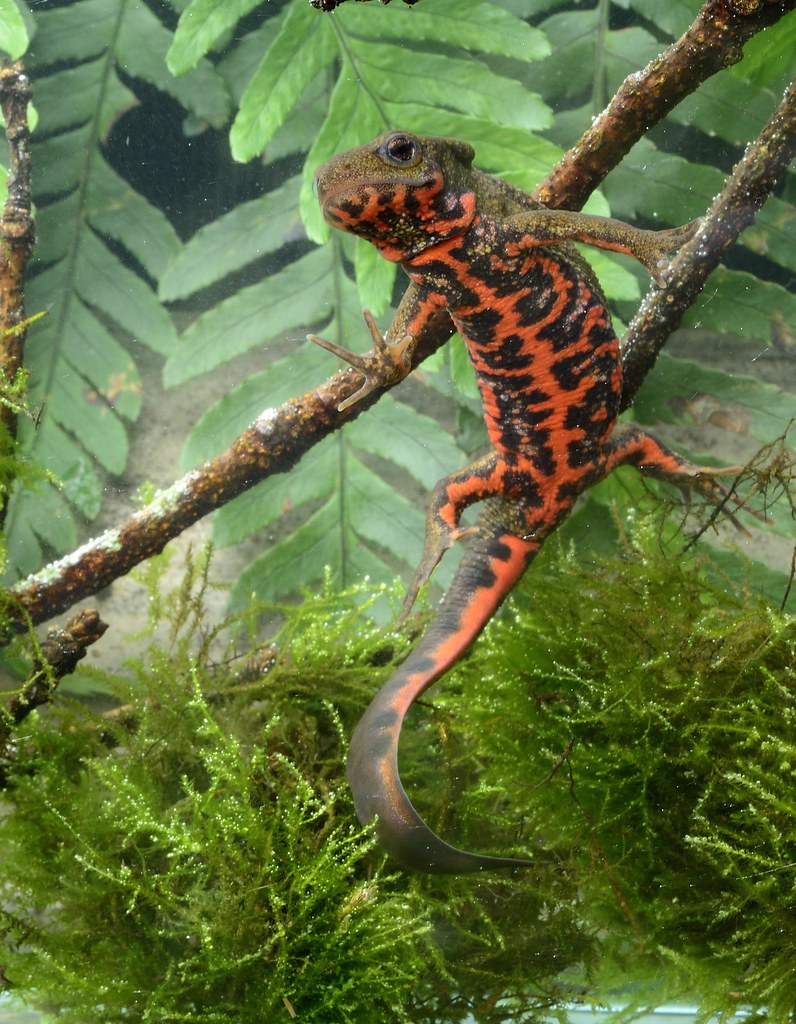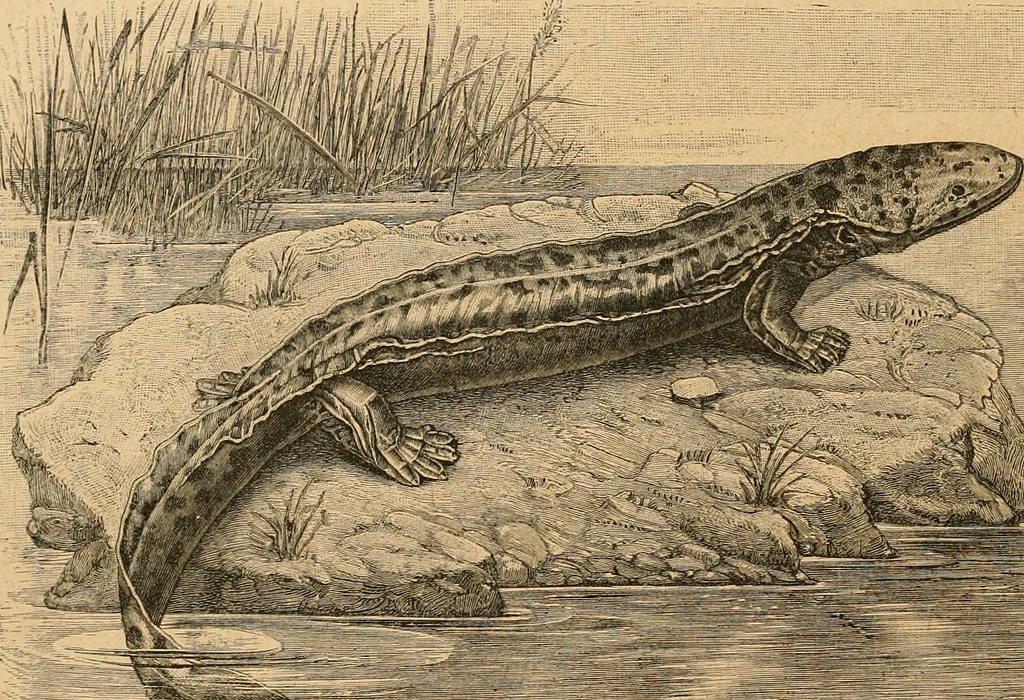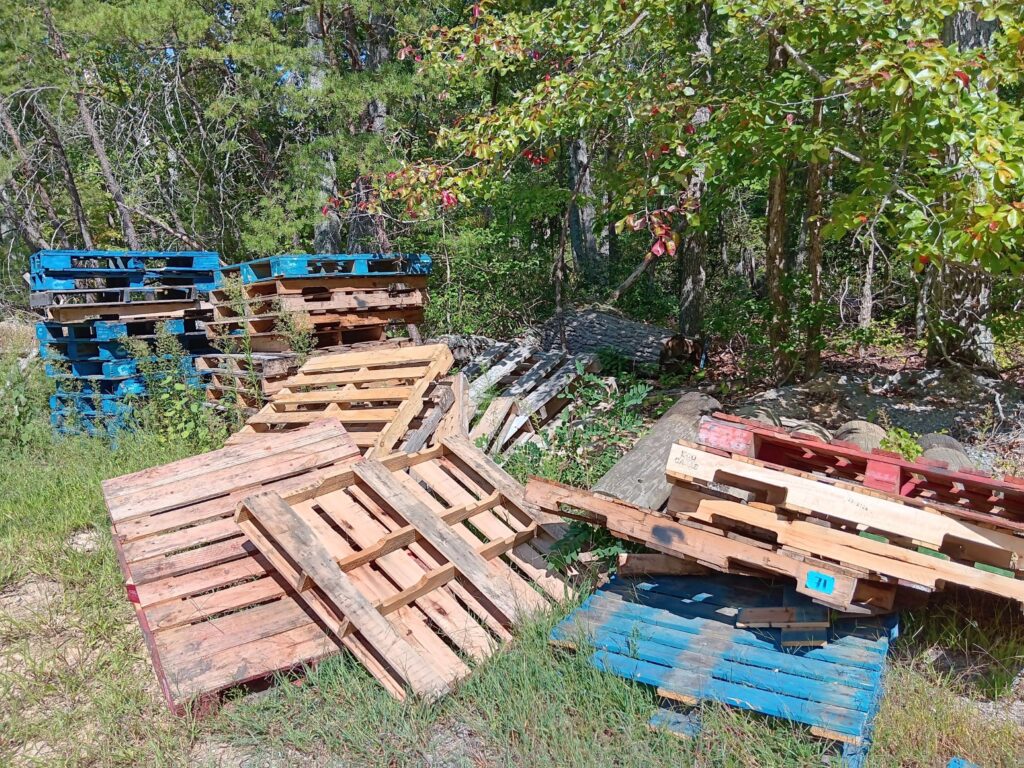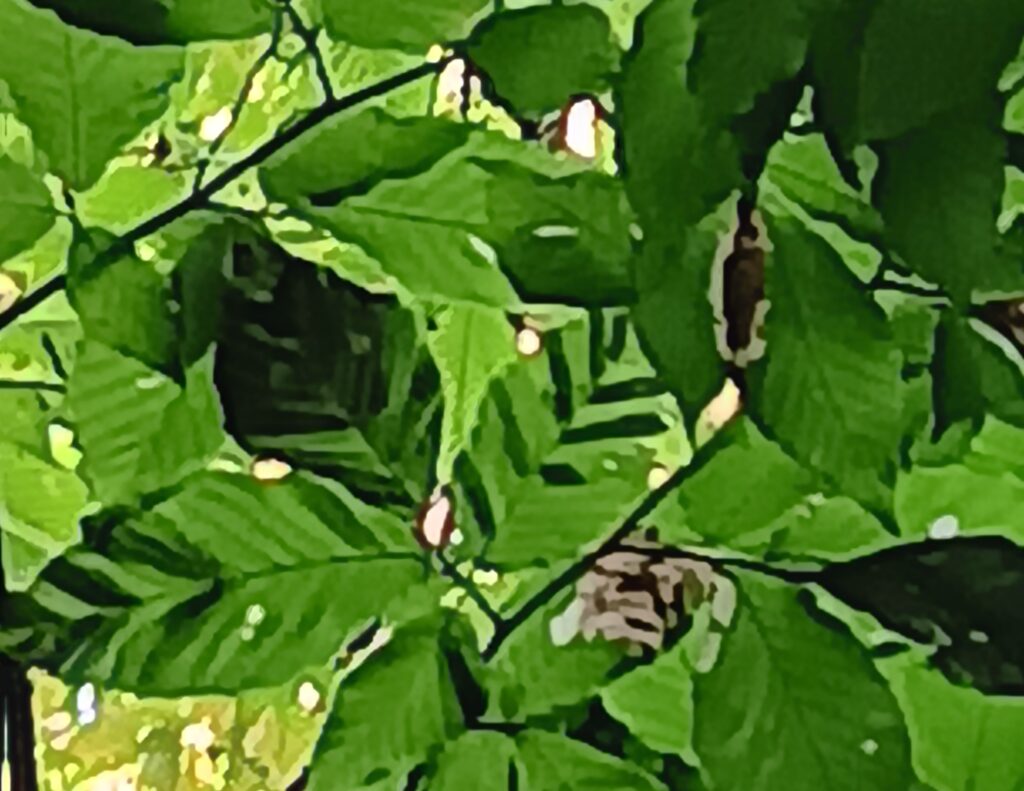Reminder: beech leaf disease (BLD) came to attention in 2012 near Cleveland. It has since spread rapidly to the East and more slowly to the North, South, and West. It has been detected in 15 states and the Province of Ontario. The disease is caused by the foliar nematode Litylenchus crenatae mccannii (Lcm). Damage to the leaves can significantly reduce the tree’s ability to photosynthesize, resulting in a progressive depletion of carbohydrate reserves following successive years of infection. Scientists continue efforts to determine how it is spread and the extent of tree mortality.
Last summer I blogged about an Integrated Pest Management (IPM) strategy developed by Bartlett Tree Research Laboratories – the research arm of Bartlett Tree Experts – to treat individual beech trees afflicted with beech leaf disease (BLD). This treatment relied on a foliar spray. The challenge is that the entire canopy must be sprayed; this is difficult for large trees. Also, some trees cannot be sprayed because of their proximity to water bodies or other issues. For these large trees, Bartlett sought to develop a systemic treatment that can be applied as a drench or root flare injection.
I rejoice to tell you that Bartlett has now confirmed effectiveness of a systemic root flare injection treatment. Again, the project is led by Dr. Andrew Loyd and Dr. Matthew Borden. The full citation for their publication is at the end of this blog.ph
This second treatment utilizes Thiabendazole (TBZ), which has a long history of use in arboriculture to manage Dutch elm disease and sycamore anthracnose. In addition to being a fungicide TBZ is also a potent nematicide.
Bartlett tested the efficacy of TBZ by monitoring 62 symptomatic American beech (Fagus grandifolia) trees across three sites comprising natural mixed hardwood forests with beech as a dominant species. Half of the trees were injected with TBZ, and the rest were monitored as non-treated controls. In the late winter after applying the injection, the researchers sampled twigs from all the trees and counted the number of nematodes in late-season dormant buds, where most of the damage occurs. They also quantified canopy density and BLD symptom expression before treatment and around 11 months after the tree injections the following year, to gauge year-over-year change. At one site, in Ohio, the trees were assessed again in the second season, or 22 months, after the initial injection. They also assessed damage to the root flare caused by the injection process.
Bartlett’s researchers found that at both 11 and 22 months after treatment, injected trees had significantly better visual ratings of canopy condition and lower numbers of Lcm in dormant buds. The untreated controls continued to have high disease severity and large numbers of nematodes in their buds.
Detailed Results
At the time of the initial inventory and treatment, about 65% of the canopies of beech trees at the two Ohio sites displayed foliar BLD symptoms. The proportion was lower at the New Jersey site, where BLD has been present only a season or two before treating – 42%.
During the first growing season post-treatment, the percent of the symptomatic beech canopies at the two Ohio sites fell by 70 – 85%. At the site where trees were evaluated again the second season (22 months) post-treatment, the percent of the canopy exhibiting leaf symptoms continued to decline. The scientists hypothesize that this continuing decrease could be due to TBZ residues being translocated to new leaves and buds, or to a reduction in local inoculum sources within the individual trees and surrounding forest due to treating a significant portion of the community.
At the New Jersey site, where injection was performed later in the season, the percent of the canopy exhibiting leaf symptoms increased by 66%. However, by another measure – percent of canopy with fine twig dieback – these trees improved by 71% while on untreated trees twig dieback increased by 95% and were already experiencing severe canopy loss.
On average, there were significantly fewer Lcm in dormant bud tissues in treated trees compared to the untreated control trees. At the two sites in Ohio, the reductions were by 86% and 99%. At the New Jersey site, the decline was not as great, but still encouraging: 70%.
These results suggest that one treatment can substantially reduce symptoms. Scientists now need to determine at what point BLD symptoms return to damaging levels at both “low” & “high” concentrations of thiabendazole in order to determine retreatment intervals and expectations.
While the disease severity (measured by the percent canopy displaying BLD leaf symptoms) of all trees increased at Hillsborough, the canopies of trees injected with the “low rate” of TBZ was significantly better than those of the untreated trees. This was because of a significant reduction in fine twig dieback in the former as opposed to a significant increase in fine twig dieback in untreated controls. Fine twig dieback symptom expression is presumed to be associated with bud abortion caused by Lcm.
The New Jersey treatments occurred at the end of August. The scientists think that this period might follow rather than precede dispersal of many nematodes from the leaves to the buds, as evidenced by the reduced but still substantial numbers of nematodes found in the buds.
While there was some damage visible at injection sites, the Bartlett team considers the frequency of these symptoms to be low. Cracking of the bark was seen on 19% of injected trees; evidence of fluxing was present on 12%. Injection sites were closing rapidly at the site reviewed after 22 months post-treatment. Additionally, based on observations made during this study, they believe that cracking can be further reduced.
Loyd et al. conclude that TBZ injection is an effective treatment option for large beech (> 25-cm dbh) where full coverage sprays with fluopyram are difficult, or for trees growing near water, or where pesticide drift may be of concern.

While this treatment can be used in natural landscapes, treatments of whole forests will probably not be feasible due to the cost. Scientists continue investigating whether some combination of silvicultural practices such as reduction in stand density and with pesticide application of select mature beech might prove effective. In fact, scientists are establishing new plots this year to test a silviculture management approach in forests of Pennsylvania and Rhode Island where BLD is prevalent.
SOURCE
Loyd, A.L., M.A. Borden, C.A. Littlejohn, C.M. Rigsby, B. Brantley, M. Ware, C. McCurry, & K. Fite. 2025. Thiabendazole as a Therapeutic Root Flare Injection for Beech Leaf Disease Management Arboriculture & Urban Forestry 2025 https://doi.org/10.48044/jauf.2025.007
Posted by Faith Campbell
We welcome comments that supplement or correct factual information, suggest new approaches, or promote thoughtful consideration. We post comments that disagree with us — but not those we judge to be not civil or inflammatory.
For a detailed discussion of the policies and practices that have allowed these pests to enter and spread – and that do not promote effective restoration strategies – review the Fading Forests report at https://treeimprovement.tennessee.edu/
or






























